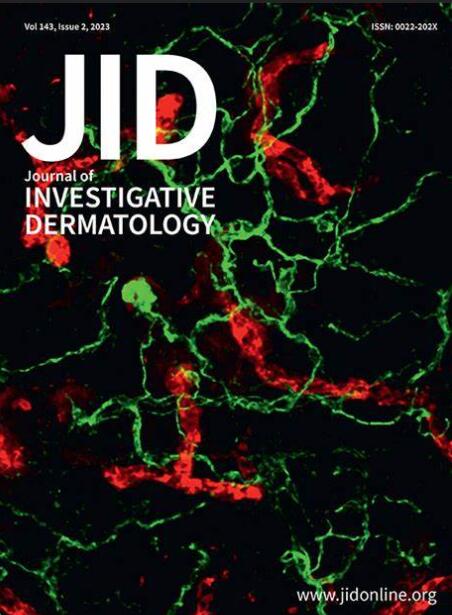Type III Collagen Regulates Matrix Architecture and Mechanosensing during Wound Healing
IF 5.7
2区 医学
Q1 DERMATOLOGY
引用次数: 0
Abstract
Postnatal cutaneous wound healing is characterized by development of a collagen-rich scar lacking the architecture and functional integrity of unwounded tissue. Directing cell behaviors to efficiently heal wounds while minimizing scar formation remains a major wound management goal. In this study, we demonstrate type III collagen (COL3) as a critical regulator of re-epithelialization and scar formation during healing of COL3-enriched, regenerative (Acomys), scar-permissive (CD-1 Mus and wild-type Col3B6/B6 mice) and COL3-deficient, scar-promoting (Col3F/F, a murine conditional knockdown model) cutaneous wound models. We define a scar-permissive fibrillar collagen architecture signature characterized by elongated and anisotropically aligned collagen fibers that is dose-dependently suppressed by COL3. Furthermore, loss of COL3 alters how cells interpret their microenvironment—their mechanoperception—such that COL3-deficient cells display mechanically active phenotypes in the absence of increased microenvironmental stiffness through the upregulation and engagement of the profibrotic integrin α11. Further understanding COL3’s role in regulating matrix architecture and mechanoresponses may inform clinical strategies that harness proregenerative mechanisms.
III 型胶原蛋白在伤口愈合过程中调节基质结构和机械感应。
出生后皮肤伤口愈合的特点是形成富含胶原蛋白的疤痕,缺乏未受伤组织的结构和功能完整性。指导细胞行为以有效愈合伤口,同时尽量减少疤痕的形成,仍然是伤口管理的主要目标。在此,我们证明 III 型胶原蛋白(Col3)是富含 Col3、可再生(Acomys)、允许疤痕(CD-1 Mus 和野生型 Col3B6/B6 小鼠)和 Col3 缺乏、促进疤痕(Col3F/F,一种小鼠条件性基因敲除模型)的皮肤伤口模型愈合过程中再上皮化和疤痕形成的关键调节因子。我们确定了疤痕纤维胶原结构特征,其特点是胶原纤维伸长且各向异性排列,Col3对其有剂量依赖性抑制作用。此外,Col3 的缺失改变了细胞对其微环境的解释--它们的机械感知--这样,在微环境硬度没有增加的情况下,Col3 缺失的细胞会通过上调和参与破坏性整合素 α11,显示出机械活跃的表型。进一步了解 Col3 在调节基质结构和机械反应中的作用,可为利用促进再生机制的临床策略提供依据。
本文章由计算机程序翻译,如有差异,请以英文原文为准。
求助全文
约1分钟内获得全文
求助全文
来源期刊
CiteScore
8.70
自引率
4.60%
发文量
1610
审稿时长
2 months
期刊介绍:
Journal of Investigative Dermatology (JID) publishes reports describing original research on all aspects of cutaneous biology and skin disease. Topics include biochemistry, biophysics, carcinogenesis, cell regulation, clinical research, development, embryology, epidemiology and other population-based research, extracellular matrix, genetics, immunology, melanocyte biology, microbiology, molecular and cell biology, pathology, percutaneous absorption, pharmacology, photobiology, physiology, skin structure, and wound healing

 求助内容:
求助内容: 应助结果提醒方式:
应助结果提醒方式:


